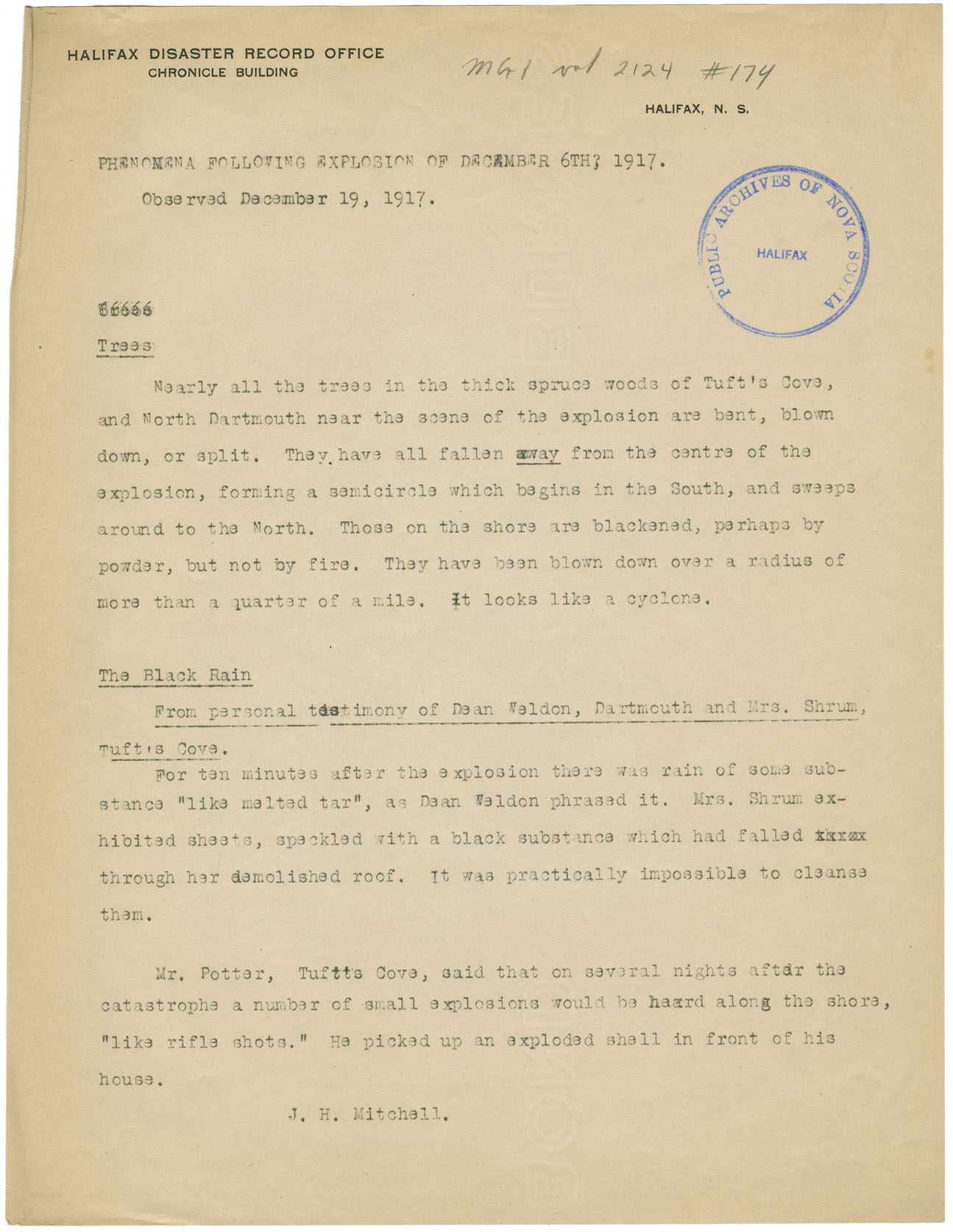Nova Scotia Archives
Archibald MacMechan
Halifax Disaster Record Office Materials
Phenomena following explosion of December 6, 1917 - J.H. Mitchell
19 December 1917. — 1 page : 30 x 39 cm.
note: transcription publicly contributed - please contact us with comments, errors or omisions
MG 1 vol 2124 number 174
HALIFAX DISASTER RECORD OFFICE
CHRONICLE BUILDING
HALIFAX, N.S.
PHENOMENA FOLLOWING EXPLOSION OF DECEMBER 6TH, 1917
Observed December 19, 1917
Trees
Nearly all the trees in the thick spruce woods of Tuft's Cove, and North Dartmouth near the scene of the explosion are bent, blown down, or split. They have all fallen away from the centre of the explosion, forming a semicircle which begins in the South, and sweeps around to the North. Those on the shore are blackened, perhaps by powder, but not by fire. They have been blown down over a radius of more than a quarter of a mile. It looks like a cyclone.
The Black Rain
From personal testimony of Dean Weldon, Dartmouth and Mrs. Shrum, Tuft's Cove
For ten minutes after the explosion there was a rain of some substance "like melted tar", as Dean Weldon phrased it. Mrs. Shrum exhibited sheets, speckled with a black substance which had falled [sic] through her demolished roof. It was practically impossible to clean them
Mr. Potter, Tuftts[sic] Cove, said that on several nights after the catastrophe a number of small explosions would be heard along the shore, "like rifle shots." He picked up an exploded shell in front of his house.
J. H. Mitchell.
Reference: Archibald MacMechan Nova Scotia Archives MG 1 volume 2124 number 174

